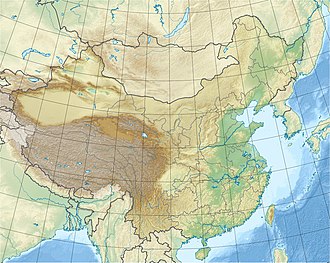| UTC time | 2011-03-10 04:58:13 |
|---|---|
| ISC event | 16298683 |
| USGS-ANSS | ComCat |
| Local date | 10 March 2011 |
| Local time | 12:58 CST |
| Magnitude | 5.4 Mw [1] |
| Depth | 10 kilometers (6.2 mi) |
| Epicenter | 24°42′36″N97°59′38″E / 24.710°N 97.994°E Yingjiang County, Yunnan, China |
| Type | Strike-slip |
| Areas affected | China Burma |
| Max. intensity | MMI VII (Very strong) |
| Casualties | 26 deaths 313 injured (133 seriously injured) [2] |
The 2011 Yunnan earthquake was a 5.4 magnitude earthquake that occurred on 10 March 2011 at 12:58 CST, with its epicenter in Yingjiang County, Yunnan, People's Republic of China, near the Burmese border. [1] A total of 26 people died and 313 were injured with 133 in serious condition. [2] China's Xinhua reports that up to seven aftershocks, measuring up to a magnitude of 4.7, followed the initial quake, which caused a total of 127,000 people to be evacuated to nearby shelters. [3] It joined over 1,000 other minor tremors that affected the region in the two preceding months. [4] Following damage surveys, officials reported that 1,039 buildings were destroyed and 4,994 more were seriously damaged. [2] The earthquake occurred one day before a much larger earthquake struck Japan that triggered a tsunami.


